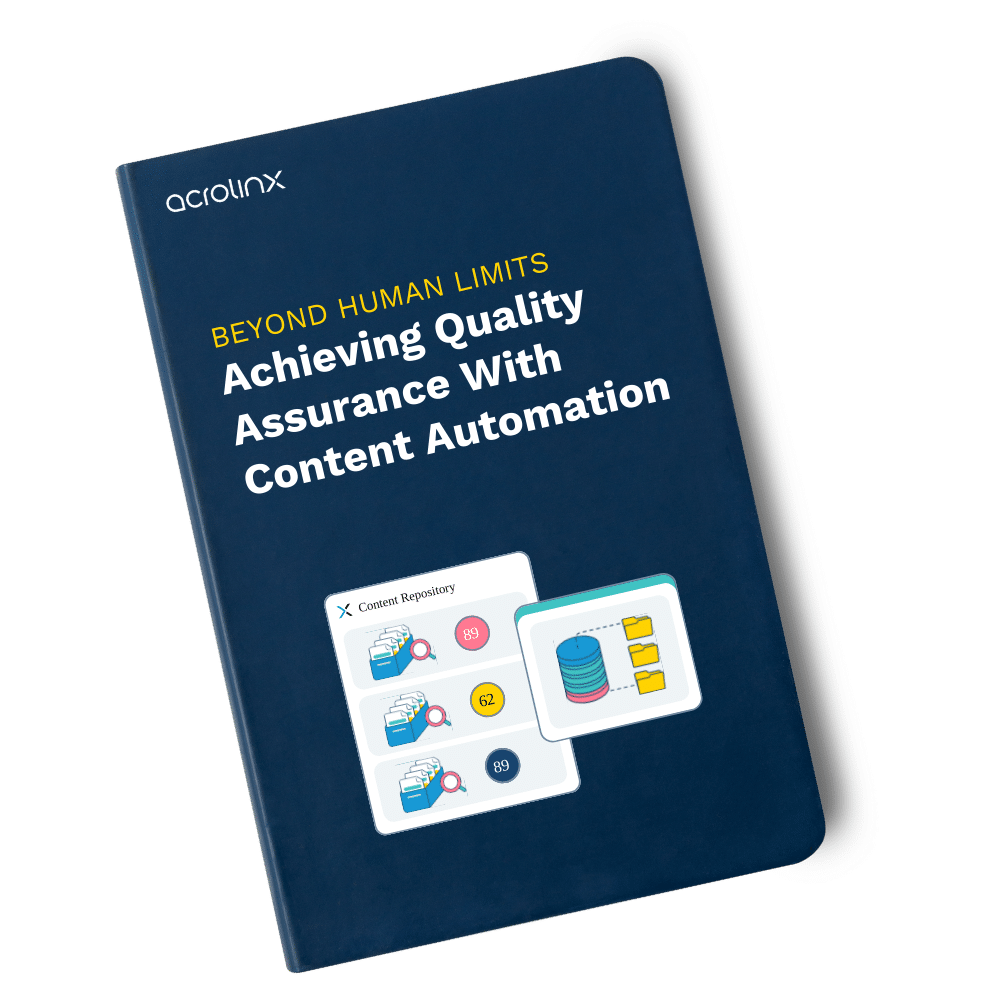Using AI for Technical Documentation: How to Update Technical Writing Skills

Technical communication includes instructional and technical information that helps users complete tasks or understand concepts. It includes tutorial guides, release notes, whitepapers, software documentation, comparison articles, and more. Technical writers are expected to use their technical expertise to write in formats that help people use technology.
Many technical writing teams are asking how AI can assist them in creating Standard Operating Procedures (SOPs), troubleshooting guides, and API documentation. In this blog, we’ll explore how AI is reshaping the landscape of technical communication and how to bring your technical documentation processes into the current AI era.
Why technical documentation teams are embracing AI
Technical writers need different skills than copywriters or other article writers. They often work with product development teams and are familiar with code, UI, and UX processes. They also use standardized documentation formats like DITA. Not to mention, they must also act as an intermediary translator between subject-matter experts (SMEs) and a less technical target audience.
AI, paired with content governance, helps technical documentation teams navigate challenges like:
Complexity of documentation
Today’s technical documents are far more than simple user manuals. Teams must manage everything from structured data to multilingual software guides, all while maintaining consistency across multiple formats.
User-centric expectations
Modern audiences expect intuitive, visually engaging, and interactive documentation that’s accessible and tailored to their needs. Achieving this requires cutting-edge tools and methodologies.
Regulatory precision
In highly regulated industries such as healthcare and financial services, adherence to compliance standards is non-negotiable. Every word must align with regulations while being clear and consistent in style, tone, voice, and terminology.
AI-powered platforms like Acrolinx transform these challenges into opportunities by improving accuracy, streamlining workflows, and enforcing consistency. By integrating real-time guidance and analytics, these tools help documentation teams create documentation that’s optimized for quality and aligned with brand and regulatory requirements. But more on that later!
SME-to-audience translating
Technical writers frequently bridge the gap between subject-matter experts (SMEs) and the end-users of a product. SMEs are often immersed in complex, highly specialized knowledge, while audiences typically need simplified and actionable information. AI tools can analyze and distill complex technical content into clear, audience-friendly language. Additionally, AI-driven content governance platforms keep terminology consistent and aligned with the intended audience’s understanding. This reduces the burden on technical writers to repeatedly translate intricate concepts and ensures that the documentation remains user-focused.
XML-based content management
For technical documentation teams working with standardized formats like DITA or managing structured content, XML-based content management systems (CMS) are indispensable. These systems ensure consistency, reusability, and scalability across documentation projects. AI can streamline XML-based workflows by automating content tagging, optimizing reuse suggestions, and maintaining consistency across modular components. AI tools can also assist with real-time quality checks, making sure that structured content reflects your style guides and organizational standards.
How AI helps upskill technical documentation teams
Here are several ways AI is helping technical teams streamline documentation:
Helping create update drafts
AI tools offer significant benefits when it comes to drafting and updating technical documentation. They provide a solid foundation by generating initial drafts that are logically structured, allowing technical writers to refine and focus on the finer details without worrying about the framework. This is particularly useful for outlining complex features, where AI can help structure content in a way that highlights important technical details. Rather than starting from scratch, writers can leverage AI to quickly establish a cohesive narrative, making sure they spend more time on content quality than on initial drafts.
Extracting information
Additionally, AI can automate the extraction of relevant information from complex source code, such as that needed for API documentation. By processing large datasets and technical specifications, AI speeds up the process while improving accuracy, thus reducing the potential for human error in technical documentation.
Streamlining repetitive tasks
AI automates time-consuming activities like formatting, terminology checks, and proofreading. Acrolinx, for example, keeps your documentation consistent and compliant, so your team can focus on crafting the story and structure instead of managing edits.
Here are some tips how to streamline repetitive documentation tasks with AI:
Set up automation for proofreading and formatting
Implement AI-driven tools to handle repetitive aspects of the writing process. This will save time and reduce the likelihood of errors.
Leverage terminology management tools
Use AI to maintain consistency across your documentation, ensuring that technical terms are used accurately and uniformly throughout.
Integrate AI with content management systems
This integration allows you to automate tasks like version control and compliance checks, streamlining the entire process.
Maintaining accuracy and compliance
In industries where precision and regulatory compliance are crucial, AI can significantly help by providing content governance for AI-generated documentation. By automatically cross-referencing documentation with compliance standards you can minimize regulatory risks and make sure that all technical documentation is up-to-date and error-free. This is especially important for industries like healthcare, finance, and engineering, where compliant documentation is not just a best practice but a legal necessity.
Here are some tips how maintain accuracy and compliance with the help of AI:
Implement AI-driven compliance checks
Use Acrolinx to cross-check your documentation against regulatory standards for written content, making sure your content is compliant and reducing manual effort.
Maintain version control and audit trails
Track updates and changes to ensure that every revision meets regulatory requirements, helping with future audits.
Set up automated error detection
For example, automated content governance can catch inconsistencies and errors early on, minimizing the need for manual reviews and ensuring a higher level of accuracy.
Delivering helpful insights
AI tools analyze documentation for readability, tone, and engagement. They also help teams pinpoint areas for improvement, making sure the documentation is genuinely helpful for its intended audience while aligning with organizational goals.
And here are some tips how to use generative AI to gather insights to benefit your technical writing:
Use editorial assistance to gauge readability
AI-powered editorial assistance helps evaluate the complexity of your writing and suggest improvements to make content easier to understand.
Assess tone and style
AI tools can analyze the tone of your documentation and ensure it aligns with your company’s voice and the target audience’s expectations.
Optimize content for engagement
AI can suggest ways to make documentation more engaging, such as breaking up long paragraphs, adding visual elements, or providing more examples.
Expanding into new target markets? You’ll likely need to translate and localize your technical documentation. Translating technical content without compromising accuracy is difficult. But some AI-powered translation tools are better at translating while preserving technical nuances across multiple languages.
Practical steps to add AI into technical writing processes
To keep pace in today’s AI-driven world, technical writers and documentation teams can:
Step 1: Adopt AI-driven platforms
AI tools like Acrolinx are game-changers for technical writers. They provide instant feedback on grammar, tone, clarity, and terminology, ensuring your content meets your company’s standards. Plus, these tools work directly inside popular authoring environments like Microsoft Word, Adobe FrameMaker, and Oxygen XML Author, so you don’t need to jump between platforms. They’re also great at analyzing large amounts of content to spot errors and suggest improvements.
To get started, connect Acrolinx (or a similar tool) to your favorite writing program. Run your current documents through it to see where you stand and how you can improve. While writing, use the tool’s suggestions to tweak tone and terminology so your work stays on-brand and polished.
Step 2: Focus on user-centered design
AI can help simplify technical content and make it more user-focused. You can also prompt it to take on the persona of your target audience and ask it to identify complicated sections of text and suggest ways to make them easier to understand. You can also use design tools like Figma or Sketch to include visuals that match the tone and purpose of your writing. Paired with Acrolinx, you can write clear technical content so it’s easier for readers to skim read and navigate.
To make your changes effective, pair AI’s recommendations with user testing. This way, you can confirm that your audience finds the content clear and helpful.
Step 3: Implement continuous feedback loops
Leverage AI analytics to collect user feedback and refine documentation. Acrolinx’s insights, for example, enable teams to measure and improve their documentation’s performance over time. Continuously improve your content by tracking quality scores for things like clarity, consistency, and tone. These insights make it easier to spot issues and refine your writing. You can also combine this data with user feedback to identify common pain points and improve over time. Some AI tools even allow you to track progress and share reports with stakeholders, showing how your content is getting better.
Set up regular reviews (e.g., every three months) to assess your content’s performance and use AI-generated reports to highlight the improvements you’ve made and weave data into meaningful insights for your business.
Delivering compliance and consistency with Acrolinx
AI isn’t just a nice to have — it’s a present necessity to stay ahead of your competitors. Solutions like Acrolinx help technical and support teams deliver high-quality, compliant, and user-friendly documentation faster and more efficiently. Whether it’s assuring regulatory adherence or aligning with brand standards, Acrolinx helps you to stay ahead in an increasingly competitive landscape.
For regulated industries, maintaining compliance while creating user-friendly documentation is critical. Acrolinx supports your enterprise by:
- Enhancing regulatory compliance: By automating compliance checks, Acrolinx ensures that documentation meets industry-specific guidelines and reduces the risk of costly errors.
- Standardizing brand voice: With AI-powered language and tone guidance, Acrolinx keeps messaging and style consistent across teams, geographies, and document types.
- Expediting documentation reviews: Acrolinx dramatically reduces review times, leading to faster publication cycles without compromising quality.
In a world where clear, accurate documentation is non-negotiable, the question is no longer if you’ll implement AI guardrails for your writing standards, but when. Why not start today, with the help of Acrolinx? Join our bi-weekly demo webinar to learn how Acrolinx can help you update your technical writing skills!
Are you ready to create more content faster?
Schedule a demo to see how content governance and AI guardrails will drastically improve content quality, compliance, and efficiency.

Kiana Minkie
She comes to her content career from a science background and a love of storytelling. Committed to the power of intentional communication to create social change, Kiana has published a plethora of B2B content on the importance of inclusive language in the workplace. Kiana, along with the Acrolinx Marketing Team, won a Silver Stevie Award at the 18th Annual International Business Awards® for Marketing Department of the Year. She also started the Acrolinx Diversity and Inclusion committee, and is a driving force behind employee-driven inclusion efforts.





